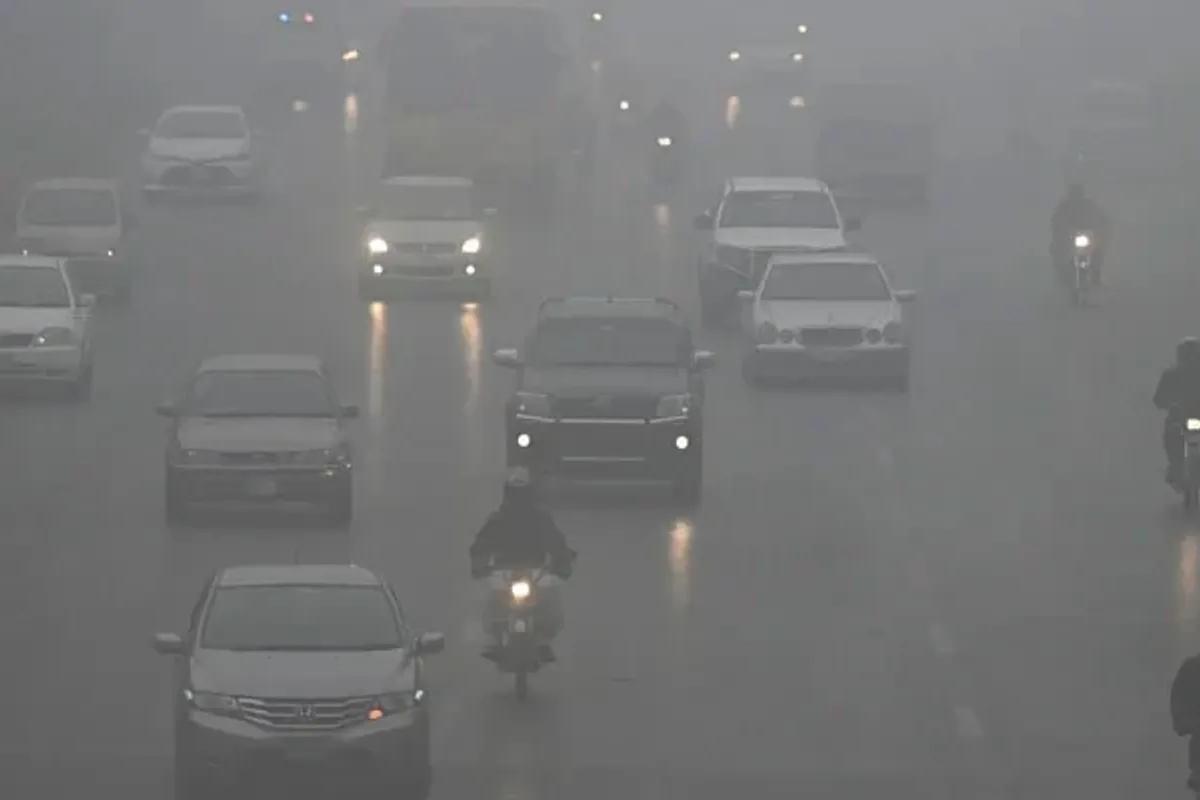Pakistan Environmental Protection Agency calls for urgent measures to curb smog threat in capital
Agency recommends imposing Section 144 for four months, targets emissions from brick kilns and burning of waste

Javed Hussain
Correspondent
I have almost 20 years of experience in print, radio, and TV media. I started my career with "Daily Jang" after which I got the opportunity to work in FM 103, Radio Pakistan, News One, Ab Tak News, Dawn News TV, Dunya News, 92 News and regional channels Rohi TV, Apna Channel and Sach TV where I worked and gained experience in different areas of all three mediums. My journey from reporting to news anchor in these organisations was excellent. Now, I am working as a correspondent with Nukta in Islamabad, where I get the opportunity of in-depth journalism and storytelling while I am now covering parliamentary affairs, politics, and technology.
AFP
News Agency Partner
AFP is a renowned international news agency, delivering comprehensive and reliable reporting on global events, trends, and issues.

Commuters make their way along a road amid dense smog in Islamabad on January 22, 2024.
AFP
Pakistan's Environmental Protection Agency (Pak-EPA) has urged district authorities to implement immediate anti-smog measures as air quality in the federal capital and the province of Punjab is expected to deteriorate with the arrival of November.
In an advisory sent to the district administration, Pak-EPA outlined that smog—a harmful blend of pollutants that accumulate during cold, dry spells—poses serious health risks, including eye and skin irritation, respiratory issues, and heart conditions.
The agency emphasized that the phenomenon is especially hazardous in the eastern and central regions of Punjab from November through February each year, with worsening levels predicted for urban centers in Punjab and Potohar in the coming weeks.
Cities including Islamabad, Rawalpindi, Sargodha, Gujranwala, Lahore, Faisalabad, and Multan are particularly susceptible, according to the advisory. Westerly weather systems are increasingly affecting Islamabad, adding to the region’s air quality challenges.
In light of the detrimental impacts on health, the environment, and the economy, Pak-EPA is advocating for stringent controls on pollution sources, especially emissions from vehicles, industrial processes, and the burning of crop residue and solid waste.

Pak-EPA has called for Section 144 to be imposed in the Islamabad Capital Territory (ICT) for four months, targeting two primary sources: (a) emissions from brick kilns and (b) the open burning of waste and agricultural residue.
The agency further recommended that the district administration enforce strict penalties for any violations under Pakistan’s National Environmental Quality Standards (NEQS), the Pakistan Environmental Protection Act of 1997, and existing ICT regulations.
Pak-EPA expressed confidence that, with the ICT Administration's support, significant improvements could be made to air quality, reducing the adverse effects of smog on Islamabad’s residents.
In October, the Punjab Environmental Department imposed a "green lockdown" in various areas of Lahore to control the escalating smog. This lockdown restricted construction activities, the use of commercial generators, and open barbecues in affected zones, aiming to reduce the sources of pollution that contribute to the city’s deteriorating air quality.
- YouTubewww.youtube.com
Pollution level in Lahore 80 times above WHO limit
Air pollution in Pakistan's second biggest city soared on Saturday more than 80 times over the level deemed acceptable by the World Health Organization (WHO), AFP reported.
The level of deadly PM2.5 pollutants -- fine particulate matter in the air that causes the most damage to health -- peaked at 1,067, before dropping to around 300 in the morning, with anything above 10 considered unhealthy by the WHO.
"We have never reached a level of 1,000," Jahangir Anwar, a senior environmental protection official in Lahore told AFP.
For days, Lahore has been enveloped by smog, a mix of fog and pollutants caused by low-grade diesel fumes, smoke from seasonal agricultural burning, and winter cooling.
"The air quality index will remain high for the next three to four days," Anwar said.










Comments
See what people are discussing